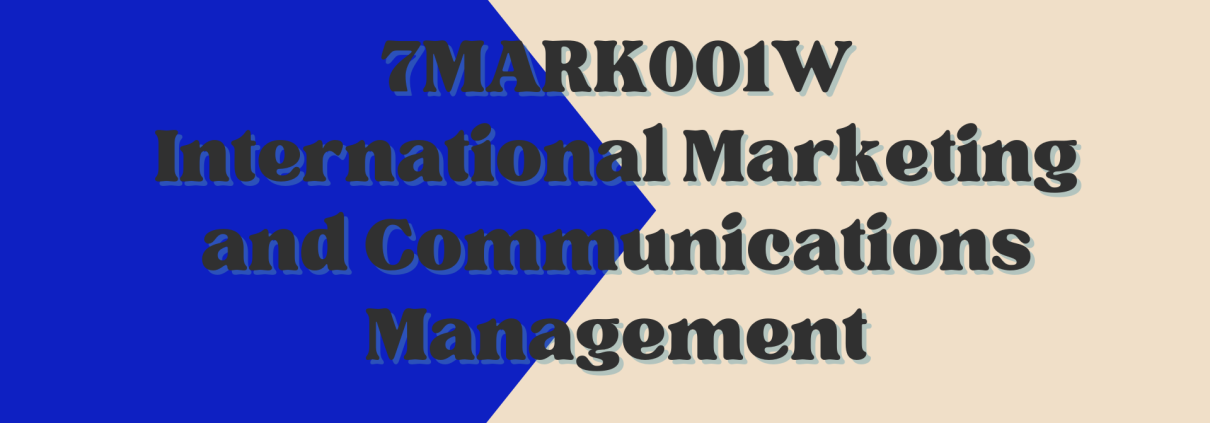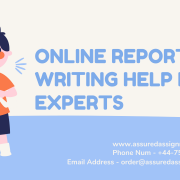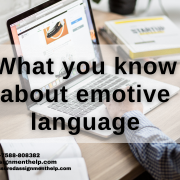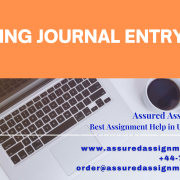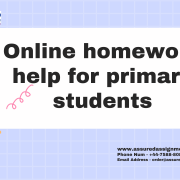The Assessment
Assignment 2 – Individual Catalogue, (to include look book, price list and short cover letter for specified international B2B buyer) and guidance essay– 2,500 words (in total) 60 % of module mark. This individual assignment attracts 60% of the module mark. The word limit is 2,500 words.
CW2: Brief and Context
MODULE: (2022) 7MARK001W.1 International Marketing and
Communications Management
November 2022
Dear Deborah and Maria,
It is with heartfelt appreciation that we thank you for noticing what is unmistakeable about our brand. You get us! We want to thank your junior consultants for making it so plainly evident that our brand has
something valued. They get us too! We have a portfolio of specialist fresh and organic foods from Rwanda. Its observable that we are currently selling them locally here in Rwanda and that we are now ready to be ‘noticed’ as the ‘best choice in our product and brand category’ (either fresh coffee and Kofi Sachets and/ or raw honey- and its by-products-beeswax, pollen for other end users) in new international markets. Thank you for supporting this recognition. You clearly see us and through your research you have shifted our attention to a point where we recognise that we already have something real and tangible to communicate to the target customer. Thank you for this overview, that we already have ‘what it takes’ to feel even more visible in the market place. Thank you, for helping us to see that the task at hand is to collect, and to assemble together into a cluster, a concentrated set of images that on mass communicate the essence of what our position is about. Thank you. We are evolving.
Your deliberate focused efforts, in collating the essence of our message, avoiding diluting it into a watered-down message, means that it will not be a jumbled mess which takes away the value of the brand position. Thank you for reminding us that you are concentrating on the collection of images, etc, which is indeed as a clustered expressing the brand essence.
We are looking forward to seeing that into the catalogue.
You have assisted us already in shifting our perception. Shifting us from ‘seeking’ a position in the marketing place, which led us to feel that we did not really have anything and had to catch up to the Western brands. To ‘seeing’ that, our clear positioning is already here, and it just needs to be distilled into its essence. To focus on the essence rather than diluting it. Thank you for providing this shift in perception. This gentle push means that we no longer are seeking to be noticed, but instead to notice that we have already decided to see the ‘itness’’ of what we stand for and to make that ‘itness’ even more detectable and attractive. We look forward to how you will make that ‘itness’ even more apparent and irresistible via the catalogue. We are evolving. We are evolving. One thing that we noticed from the research that your junior International Marketing and Communications consultants have completed, is that we can step away from the ‘pick me’ attitude, that we do not have to wait to be notice and to evolve away from being positioned around quality or price alone. That sharing and collaboration between us is incredibly supportive. Your guidance came from you detecting what is already unique and rare about our positioning, which is coming through all the authentic research you are conducting. Thank you, thank you, thank you for welcoming your own reading of ‘us’ coming from your research.
Going forward, our expectation is that you will be providing us with two-part catalogue (look book, pricelist) along with the guidance essay. We expect that we shall be using this guidance essay almost like a training manual to teach our Rwandan staff about what are the best signs, symbols, images, colours and so on, that the named wholesale buyer in the UK and recommended country will easy recognise.
We were wondering if you could reemphasise our expert positioning. We were wondering could it come in the form of a welcome introduction in the look book. We were thinking that it could come in an introduction section, a sort of welcome letter written by you of course, pointing out how what we do really set us apart in a marketplace where it could still be argued that we look like everyone else in the product and brand category. What do you think?
We want to avoid looking like others from our country and category, yes by building on the common themes of the category, but definitely looking different too.
We also are looking forward to your guidance essay because we intend to use it as a sort of roadmap that keeps us on track and helps us to refer to what we need to keep doing to maintain the confidence of the buyer’s you suggest that we reach out to. We feel incredibly pleased when we think about you working on this project with us. We are pleased that you plan to use lots of ‘points of difference’ and ‘points of parity’ imagery as reference points. That this imagery recognises what is already there, plus makes us more aware of the most and least recognisable images linked to us. We look forward to how you will then ‘curate’ photos, video, sound, font, font variations, logos, patterns, stories, to position us in an ‘opposite’ manner, to ensure that we stand out in the marketplace. We look forward to reading your justification of all of this in your guidance essay. As you know the catalogue (look book: price list) sits within a bigger communications process. And that the bigger process of communication, where we display, exhibit and demonstrate the value that we offer to the target customer. We plan to use all your positioning guidance to shape the promotional funnel. We can just imagine the international buyer reading this catalogue. We can imagine that both the UK buyer and the international buyer will really enjoy it. Enjoying it to the point that they decide to connect with us. That is our ideal outcome!
As you know we are actively involved in providing local jobs in Rwanda. The women, the families all appreciate the efforts you are putting in to guide about exporting. We value the UN’s SDG’s and want people to know that. Do you think its worth using them in our SDG’s? Will the target believe it, or will they think we are being fake? What do you advise? As we mentioned, we are curious about what are the most noticeable, observable images that you will use to express the unique, rare, about the country that we plan to export to, our country and the life of the target audience. Their most recognisable, observable, images of sustainability, innovation, art, country of origin, food, drink, culture, music, family and so on which you will use in the look book. Will you be getting ideas from research using the
CAGE and Hofstede models? Will you be using that great book written by Geoffrey Moore ‘Crossing the Chasm’ when you are thinking about what is most noticeable for certain target audiences?
You might not know this, but our holding organisation, Rwandan Whole Foods does not have an agreed brand identity. We do not have a clear brand archetype either for Rwandan wholefoods who we sell through or ourselves individually. We only have a few elements for our own individual brands, that we have already sent you i.e., the logo and a few colours, nothing else. Now that we have mentioned it, we are keen for you to use brand archetypes.
Out of the twelve available, which one do you reckon we are? Do you think it differs from our holding firm, Rwandan Wholefoods? Do you think we have the same brand archetype as them or not? You will tell us. We look forward to your ideas.
Thank you for helping us to serve our country as well as sell internationally. We know that you will be directing your junior consultants to ensure that we move from the’ past, historical’ imagery and to curate imagery that makes it easy for the buyer in question to see how we ideally fit into their existing product offer.
We are ready to step into a new era in our international business life. One where we can
exhibit this expanded horizon of what the named target customer currently imagines
possible for our country of origin, product category, brand category. One where we display a
life where we show and feel more gratitude and fulfilment.
We look forward to this exhibition of important work in the new year, Jan 2023. So, in closing we know that you have an amazing process, and we are looking for a catalogue (look book, price list) and guidance essay which positions our brand and the products as ‘authorities’, experts. That we are valued from an advisory position, that informs people about our unique brand solution/method, and for those sceptical about Rwandan quality, to
really display that our quality processes are the same as many other world-wide standards. We are keen that you give our quality processes a unique name, to ensure that they are valued, rather than commodified.
Deborah, Maria, we will let you introduce more details required for this next piece of work to the junior consultants. Thank you for this breakthrough experience. Thank you, Deborah, Maria and junior international marketing and communications consultants for cheerleading us. Thank you. Your sincerely, Remy Paterne Niyonsenga: Royal Victuals Ltd. Rwanda
Timothy Manzi (New Wave coffee
Royal Victuals: Rwandan raw honey, pollen, propolis for the wellbeing, gifting, food, beauty and pharmaceuticals industries
New Wave Coffee: Rwandan fresh third wave speciality coffee-grown in high altitude fertile volcanic soil and known for its bright floral fruited flavours)
Clients of Rwandan Whole Foods
You are a junior consultant who works as a part of a product development and international marketing team.
CW2 is where you turn your insights from the CW1 analysis and deliver recommendations into an introduction cover letter, catalogue (look book/price list) and guidance essay which shapes their international marketing and communications in a professional manner.
Next Step
1. Read clients letter and determine what they require. Please go through it very carefully and identify words you don’t understand. Make a list of what you think is expected of you.
2. Read the brief below to determine what you should ‘care’ about
3. Confirm submission date in module handbook- Jan 17 th, 2023
4. Review marking scheme
CW2 Brief
1) Output:
You have been asked to prepare a two-part catalogue (look book and valued based price list) along with a guidance essay (you can select a theme for the guidance essay- see below).
The catalogue needs to come with a cover letter and include a welcome section.
Who will read your work?
• The two-part catalogue will be read by your two target buyers
• Your guidance essay will be read by your Rwandan client
The catalogue should be built from an agreed brand identity and brand archetype
1. Brand archetype (select that from the twelve choices, Pearson and Mark)
2. Logos (logo variation)
3. Colour Palette
4. Typography(fonts)
5. Secondary Visual Elements
a. Textures & Patterns
b. Icons
c. Key Brand Images
6. Messaging
a. Brand Vision
b. Brand Stories
2) Context:
Your client recognises that the key buyers that you have identified for them will not be familiar with them at all.
They also recognised that the other stakeholders in the decision-making unit are equally unfamiliar with their ability to offer branded products and white label products.
They also recognise that research by Levine, Reypens, and Stark 2021 which confirms the need for African brands to provide many more visual examples of achievement for their brand to be salient i.e., ‘noticed’ and valued for positive attributes within their given product and brand category.
They know from the research of Jenni Romaniuk and Rachel Lawes that it is important to build distinctive brand assets based on international semiotics. This is necessary so that they are recognised as relevant within a brand category, as well as being able to stand out within that given category.
They regard this research as important in understanding the issues regarding their international visibility as under recognised people.
Your client is open to the intersection of another relevant research. E.g., neuroplasticity which says that anything ‘new’ is challenging to the brain and that it is the job of marketers to make the unfamiliar familiar, by using both familiar and unfamiliar sensory references. To use repetition to refresh memoires so that ‘context’s which are unfamiliar, challenging and uncertainty become less threatening to the brain
Your client is open to research from Tara Swart Biebe who is a neuroscientist and former MD who has worked to examine the many intricacies of the human brain, and who recommends creating ‘visual action boards’ which demonstrate target customers enjoying the unfamiliar African products.
This may inform the range of images you suggest for the catalogue. Biebe points out that by carefully curating images, that we provide the ‘viewer’ with an opportunity to practice and rehearse the experience and ideas of using products from distant places. Biebe also points out that the purpose of such imagery is refreshing the memory. This process of helping viewers to feel safe and familiar with the unfamiliar is key in international communications
and that this form of curation work should inform your brand identity work, where you will choose, logo plus logo variation, colour palette, photo images, patterns, tone of voice, storytelling which reflect a given archetype of the brand.
2.1 Your wholesale buyer
You should have identified two buyers and developed their persona’s. One for the UK and the other for the recommended country). Both are known to buy based on value.
2.1.1. International buyer 1- Your British B2B buyer:
Despite the UK going through a cost-of-living crisis, your buyer ‘may’ want a planogram to understand how to position value amongst their other brands/own label. They also want you to explain the value, and rarity, of elements of the product, process, country of origin, lifestyle or any other important positioning aspect that matters, so they can feel certain that its worth bringing your product into their current product mix.
2.1.2 International buyer 2- Your recommended B2B buyer:
Is unfamiliar with your client’s offering yet remains open to giving them a chance. They have a lot of older customers and have been reading the work of Harvard psychologist, Ellen Langer’s research on neuroplasticity and the impact of how communicating the values of youthfulness to an ageing target group of people, aids building wellness.
Ellen Langer’s 1979 ‘counter clockwise’ study that looked at what effects turning back the clock psychologically would have on an older adult’s physiological state is an important wellbeing study that this buyer is interested in, especially as they are targeting baby boomers. The stated research question was, ‘If we put the mind back twenty years, would
the body reflect this change? Look up that research as you will discover that people’s bodies performed differently as they changed their personal identities.
3.0 Catalogue (look book and price list) * more details to follow
Use the following technology to prepare your collection of images, a curated, cluster designed to strengthen the experience of the positioning.
• Create it using, powerpoint, Canva and Adobe Express- join for free. Explore their templates
• Use Unsplash, or pixabay for images. Please acknowledge the source
• Use Pexels, Behance, Flickr and Pinterest for visual inspiration
• Tips for the contents of the catalogue (A welcome section/clear headlines/ clear imagery/clear call to action/contacts/wholesale products- for branded and white label option)
4.0) How to approach this work- as a group, individually or a hybrid:
You are expected to continue with the themes you discovered in your groups, however this time you will submit your work individually and be graded individually. The purpose of working together is to ensure that you have continuity with the curation of your two-part catalogue (look book and price list).
4) Guidance essay:
Choose one of these titles to prepare your guidance essay.
The purpose of the guidance essay is that it justifies your approach to your catalogue for your client. They will use it as a training manual to encourage productivity and delegation in their teams.
You will note that each essay requires you to dig deeper into the intersection between elements of research.
You are to demonstrate the depth of reading you have been engaged with by providing a minimum of ten references.
Please choose from one of the titles below:
1) The international McKinsey consultancy firm has several reports pointing out that Africa is rising, on the rise, or is moving. These reports offer important insights.
Consider why it is useless in a highly saturated and often commodified market for international food producers from Africa to just focus on ‘quality’ and to neglect or overlook positioning using Bakers’ value-based pricing, storytelling techniques. Make the distinction between premium, quality and luxury goods and how the differ Discuss
2) McKinsey Global Institute reports that Africa remains a high-potential region, but growth is concentrated in a few markets and income segments. To win, companies need a tailored approach to international marketing and communications. Some suggest that this will come through clear positioning, storytelling, value-based pricing rather than commodity pricing, country of origin theory and the United Nations Sustainable Development Goal’s: Discuss using examples, why your client from Rwanda should avoid overlooking these approaches to marketing and communications. In your discussion consider what they would lose if they neglected to address storytelling, value-based pricing, country of origin and the UN’s SDGs in their international marketing communications.
3) Understanding that the science of positioning is at the heart of visibility in a marketplace. You are asked to advise your client about why becoming clear about how to ‘cross the chasm’ from early adopters to the mass market is key to the success of the promotional elements when it comes to raising visibility for your client: Moore’s ‘Crossing the chasm means being ready to meet the needs of the next round of new customers. And by being aware of the difference between early adopters(superfans) in speciality markets and needing to communicate to the mass
market who are quite different to the early adopters is essential to developing a communications strategy. Explain with examples to your Rwandan client why neglecting ‘the chasm’ will negatively affect their international communications. Demonstrate how understanding the difference between the values of the early adopters and late adopters affects the international communications strategy going forward.
4) Increasing the international visibility and recognition of your client is key to their success. Discuss how the 12 Brand Archetypes developed by Carol Pearson and Margaret Mark, which are mental shortcuts designed to help buyers quickly understand the ‘brand personality’, is an important lever for your client’s international visibility strategy. Discuss why international exporters like your client may want to adopt brand archetypes into their approach to branding. Consider in this discussion the work of Levine, Reypens, Stark 2021, who consider the positive
and negative consequences around attention, visibility linked to being under recognised groups. Consider the possible issues arising from neglecting this approach to their brand personality and positioning.
5) Increasing the international visibility and recognition of your client is key to their success. Rachel Lawes states that semiotics creates deeper meaning for international audiences, and this can have an influence on whether they purchase products or services. Her mentee, N. Chloé Nwangwu suggests that by understanding the ‘science of visibility’ in relation to brands drawn from the work of Jenni Romaniuk ensures that unrecognised groups will gain
much more success. Discuss why international producers like your client from Rwanda may want to adopt the approaches mentioned and the consequences for overlooking them in their international communications
5) Despite efforts toward equity in organizations and institutions, minority members report that they are often ignored, and their contributions undervalued. Against this backdrop, research from Levine, Reypens and Stark suggest a way forward after conducting a large-sample, multiyear experimental study to investigate patterns of
attention. The findings provide causal evidence of a racial attention deficit: That even when in their best interest, White Americans pay less attention to Black peers. In a baseline study, they assign an incentivized puzzle to participants and examine their willingness to follow the example of their White and Black peers. White participants presume that Black peers are less competent—and fail to learn from their choices. They then test two interventions: Providing information about past accomplishments reduces the disparity in evaluations of Black peers, but the racial
attention deficit persists. They found that when Whites can witness the accomplishments of Black peers, rather than being told about them, that the racial attention deficit subsides. Keen international marketing and communications
managers keen to ensure equality, inclusion and diversity are becoming more and more aware of this sort of research and really interested in how to apply it. So, despite the surprising research by Levine, Reypens, Stark 2021. international marketing and communications managers may want to understand how they can proceed knowing this research. Develop a discussion with examples which may consider Black Lives Matter. Discuss how being an under recognised brand leader provides an opportunity to position a message for buyers to which they can open up to. Consider how your international brand may want to curate itself through imagery that builds on Levine et al’s research. Discuss how it can be used to build more equality, inclusion and diversity into a product and brand category that wishes to break the mould. Levine, S. S., Reypens, C., & Stark, D. (2021). Racial Attention Deficit. Science Advances, 7 (38), abg9508. doi: 10.1126/sci-adv. abg9508 39 Pages Posted: 8 Jun 2021 Last revised: 9 Mar 2022 Sheen S. Levine University of Texas at Dallas; Columbia University Charlotte Reypens

